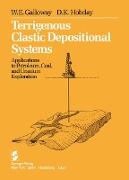Terrigenous Clastic Depositional Systems
BücherAngebote / Angebote:
The reserves, or extractable fraction, of the fuel-mineral endowment are sufficient to supply the bulk of the world's energy requirements for the immediately forseeable future-well into the next century according to even the most pessimistic predictions. But increasingly sophisticated exploration concepts and technology must be employed to maintain and, if possible, add to the reserve base. Most of the world's fuel-mineral resources are in sedimentary rocks. Any procedure or concept that helps describe, under stand, and predict the external geometry and internal attributes of major sedimentary units can therefore contribute to discovery and recovery of coal, uranium, and petroleum. While conceding the desirability of renewable and nonpolluting energy supply from gravitational, wind, or solar sources, the widespread deployment of these systems lies far in the future-thus the continued commercial emphasis on conventional nonrenewable fuel mineral resources, even though their relative significance will fluctuate with time. For example, a decade ago the progilostications for uranium were uniformly optimistic. But in the early 1980s the uranium picture is quite sombre, although unlikely to remain permanently depressed. Whether uranium soars to the heights of early expectations remains to be seen. Problems of waste disposal and public acceptance persist. Fusion reactors may ultimately eliminate the need for uranium in power generation, but for the next few decades there will be continued demand for uranium to fuel existing power plants and those that come on stream. This book is, to some extent, a hybrid.
Folgt in ca. 5 Arbeitstagen

